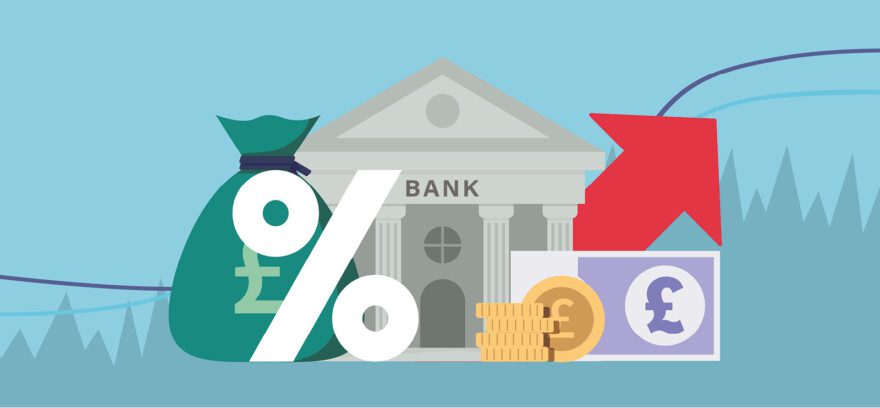UK markets sold off this week, with the FTSE 100 Index falling by 3.5% to trade at 7,270 points at the time of writing. Equities faced a general risk-off mood amid concerns that further monetary tightening will drive the economy sharply lower. Investors are now betting that UK interest rates will climb to 6.5% by March next year, the highest level since 1998, a move that will cause even more pain for mortgage borrowers.
Governor of the Bank of England, Andrew Bailey said on Thursday that he wanted to get inflation “back to where it needs to be and then we can assess what level of interest rates should be a going forward. Although he expressed some sympathy regarding the difficulties this would cause, Bailey justified the UK central bank’s response to inflation, as if it gets worse interest rates will have to increase even further.
The UK 10-year gilt surged above 4.6%, the highest level since July 2008, due to the anticipation of an extended period of elevated interest rates. Whilst rate expectations have risen, the sterling has weakened in recent weeks, from a peak of $1.2838 to $1.2735 on Friday. This is of particular concern because in an environment where interest rate expectations are rising compared with other countries, the British pound should be strengthening. The UK is expected to increase interest rates by more than the Federal Reserve and the European Central Bank.
Elsewhere, UK house prices fell 2.6% in June, the fastest annual pace since 2011, as the rise in mortgage rates hit the property market.
Commodity markets
In the commodity markets, Brent crude futures traded around $76 per barrel on Friday and are set for a weekly gain as the market digested tighter crude supply alongside fears of a global economic slowdown. On the supply side, top oil exporters Saudi Arabia and Russia announced a fresh round of output cuts for August. The total cuts now stand at more than 5 million barrels per day, equating to 5% of global output. The cuts, along with a larger than expected drop in US crude inventories, provided some support for prices.
A tight labour market and robust services growth in the US strengthened the case for the Federal Reserve to raise interest rates further. Also, economic recovery in China remains uneven and borrowing costs will continue to rise in many countries.
Gold traded around $1,915 an ounce on Friday as investors fretted about rising interest rates, which increases the opportunity cost of holding precious metals.
US equity futures
US equity futures were relatively flat on Friday, after investors responded to fears of forthcoming rate hikes by the Federal Reserve, as well as the latest American employment data. In Thursday’s regular trading session, the Dow Jones Industrial Average plunged 1.07%, the S&P 500 Index declined 0.79%, while the Nasdaq Composite fell 0.82%.
Federal Reserve officials signalled they intend to resume interest rate increases amid a growing consensus that more tightening is needed to stamp out high inflation in the world’s largest economy. Minutes from the Federal Open Market Committee revealed the majority of officials determined that additional increases in the Federal Reserve’s benchmark interest rate would be appropriate. The tight labour market and upside risks to inflation are still key factors shaping the outlook for interest rates, nearly a year and a half after the US central bank embarked on an aggressive cycle of interest rate rises to tame price pressures.
On the economic outlook, Federal Reserve officials said they expected growth to be subdued for the remainder of the year, despite banking stresses having receded compared to earlier in the year. The US economy is expected to have added 225,000 jobs in June 2023, following a surprisingly high 339,000 rise in May, and remaining more than twice the 70,000-100,000 needed per month to keep up with growth in the working age population. The data showed big increases in the hospitality and leisure sectors, as well as in construction and transportation. The two-year US Treasury note hit 5.12%, while the benchmark 10-year note reached 4.08%, with the sell-off by investors pushing up yields.
The information provided in this communication is not advice or a personal recommendation, and you should not make any investment decisions on the basis of it. If you are unsure of whether an investment is right for you, please seek advice. If you choose to invest, your capital may be at risk and the value of an investment may fall as well as rise in value, so you could get back less than you originally invested.
